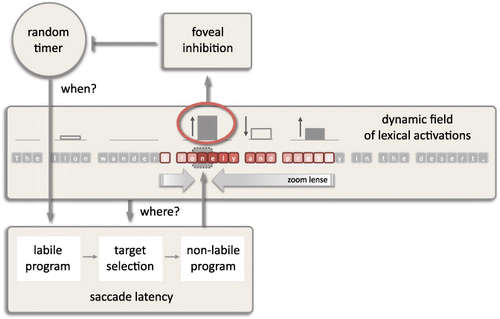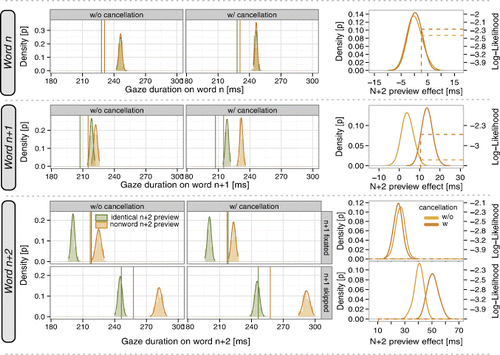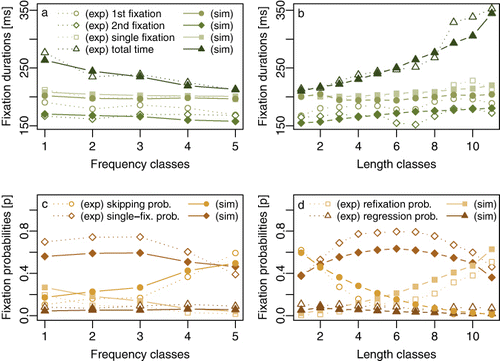Figures & data

TABLE 1 Summary of parameter values in the present SWIFT model



TABLE A1 Experimental (exp) and simulated (sim) means for fixation duration and fixation probability measures on word n, n + 1, and n + 2 in the target region

Register now or learn more
Open access





People also read lists articles that other readers of this article have read.
Recommended articles lists articles that we recommend and is powered by our AI driven recommendation engine.
Cited by lists all citing articles based on Crossref citations.
Articles with the Crossref icon will open in a new tab.